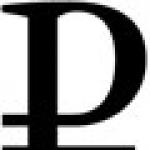History of photography. Presentation "History of the development of photography" in physics - project, report History of the creation of photography presentation

What is photography?
Photo(French photographie from ancient Greek φως / φωτος - light and γραφω - I write; light painting - light painting technique) - obtaining and storing a static image on a photosensitive material (film or photographic matrix) using a camera.

The main stages of development of photographic equipment
Since time immemorial, it has been noticed that a ray of sun, penetrating through a small hole into a dark room, leaves a light pattern of objects in the outside world on the plane. Objects are depicted in exact proportions and colors, but in reduced sizes compared to life and upside down.




Pictures of Niepce
Nicephore Niepce(full name Joseph Nicéphore) French inventor, one of the creators of photography. For the first time (1820s), he found a way to fix the image obtained in a camera obscura, using asphalt varnish (heliography) as a photosensitive substance. From 1829 he collaborated with Louis Daguerre.
Monument to Nicéphore Niepce in Chalons-on-Seine

First lasting image
Niepce received the first permanent image in a camera obscura in 1822. However, only the heliography of 1826 survived, when Niepce began using an alloy of tin and lead instead of copper and zinc plates. The exhibition lasted eight hours.
Camera obscura Niepce

Pictures of Daguerre
Louis Jacques Daguerre, French artist and inventor, one of the creators of photography. He developed (using Niépce's experiments) the first practical method of photography - daguerreotype (1839), the idea of which was to obtain an image on the polished surface of a silver plate impregnated with iodide vapor. He placed this plate in a camera obscura and exposed it, and developed it with mercury vapor.

He achieved the result in 1837, after 11 years of experiments. He recorded the image obtained and developed in mercury vapor by washing the plate with a strong salt solution and hot water. In this case, the exposure time of the plate in the camera obscura ranged from 15 to 30 minutes (while Niépce heliography required an exposure of up to 8 hours).
St. Isaac's Cathedral 1839

Photographs of William Henry Fox Talbot
At virtually the same time the Englishman William Henry Fox Talbot invented another method of obtaining a photographic image, which he called “calotype”, from the Greek word “kalos” - beauty. The image was obtained in a camera obscura on paper soaked in a photosensitive solution. The paper plate was developed and then fixed. It turned out negative. A positive image was printed from a paper negative onto photosensitive paper. The main advantage of calotype was the ability to obtain several copies of one image.
And it was calotype that laid the foundation for photography as we know it today.

In 1887, Goodwin patented a method for making a transparent, flexible film from cellulose nitrate. In 1889, the American company Eastman Kodak launched the production of transparent flexible film. Since then, photography has become accessible to amateurs.
In 1904, the first plates for color photography appeared, released by the Lumiere company. The image was produced on glass and could be viewed in the light. In 1907, the Lumiere brothers started producing records and called them autochrome.

On August 20, 1861, English photographer Sutton patented the first single-lens reflex camera. It was a large box with a light-protective lid on top, which served as an observation shaft.
In 1914 in Germany, Barnack created a small-format camera that revolutionized photography. Since 1924, the Leitiz Company began producing this camera under the name LEICA. Soon interchangeable lenses with different focal lengths were developed for this camera.

Color photography appeared in the middle 19th century .
The first permanent color photograph was taken in 1861 by James Maxwell using three-color photography (color separation method). To obtain a color photograph, three cameras were used with color filters installed on them (red, green and blue). The resulting photographs made it possible to recreate a color image during projection (and later in printing).

December 13 1902 Prokudin-Gorsky first announced the creation of colored transparencies By three-color photography method

https://accounts.google.com
Slide captions:
History of photography
Photography (French photographie from ancient Greek φως / φωτος - light and γρ αφω - writing; light painting - light painting technique) - obtaining and storing a static image on a photosensitive material (photo film or photographic matrix) using a camera.
In a broader sense, photography is the art of taking photographs, where the main creative process lies in finding and choosing the composition, lighting and moment (or moments) of the photograph. This choice is determined by the skill and skill of the photographer, as well as his personal preferences and taste, which is typical for any type of art.
Images using visible light reflected from objects were obtained in ancient times and were used for painting and technical work. The method, later called orthoscopic photography, does not require serious optical devices. In those days, only small holes and sometimes slits were used. Images were projected onto surfaces opposite to these holes.
The method was further improved with the help of optical instruments placed in place of the hole. This served as the basis for the creation of a camera that limits the resulting image from exposure to non-image-carrying light. The camera was called a pinhole; the image was projected onto its rear matte wall and redrawn along the contour by the artist. After the invention of methods for chemical image recording, the camera obscura became a structural prototype of the photographic apparatus. The name "photography" was chosen as the most euphonious of several options by the French Academy in 1839.
Preview:
To use presentation previews, create a Google account and log in to it: https://accounts.google.com
Slide captions:
History of photography (continued)
Therefore, the first photograph in history is considered to be the “view from the window” photograph taken by Niepce in 1826 using a camera obscura on a tin plate covered with a thin layer of asphalt. The exposure lasted eight hours in bright sunlight. The advantage of Niépce's method was that the image turned out to be in relief (after etching the asphalt), and it could easily be reproduced in any number of copies.
In 1839, the Frenchman Louis-Jacques Mandé Daguerre published a method for producing an image on a copper plate coated with silver. After thirty minutes of exposure, Daguerre moved the plate to a dark room and held it for some time over heated mercury vapor. Daguerre used table salt as an image fixative. The picture turned out to be of fairly high quality - well-developed details in both highlights and shadows, however, copying the picture was impossible. Daguerre called his method of obtaining a photographic image daguerreotype. An original Daguerre camera made by Alphonse Giroux, it measures 12 x 14.5 x 20 inches. The inscription on the tag “The device has no guarantee if it does not bear the signature of Mr. Daguerre and the seal of Mr. Giroud.
Almost at the same time, the Englishman William Henry Fox Talbot invented a method for producing a negative photographic image, which he called calotype. Talbot used paper impregnated with silver chloride as an image carrier. This technology combined high quality and the ability to copy photographs (positives were printed on similar paper).
Photographer's kit, weighing between 70 and 120 pounds, required for wet collodion photography.
A camera for business cards, patented by Adolphe-Eugene Disderi in 1854. Eight exposures were made on a 6.5 by 8.5 inch plate. The print was then cut and pasted onto cards the size of a business card - 4 by 2.5 inches.
Horse in motion. 1878 Photos from wet plates. First successful photographs of a horse moving along a track in Palo Alto, San Francisco, June 19, 1878. The exposure of each negative was less than 1/2000 of a second. 12 chambers similar to the chamber below were used.
Eastman in 1888 developed an excellent amateur camera for its time and gave birth to a word that has since become synonymous with the word “camera” - “kodak”. The Kodak camera was a small box (hence the name "detective camera"), a little over 6 inches long, 3.5 inches wide and less than 4 inches high. Anyone who, as stated in the instructions, could work with it was able to: 1. Direct the camera. 2. Press the button. 3. Turn the key. 4. Pull the cord.
Color photography appeared in the mid-19th century. The first permanent color photograph was taken in 1861 by James Maxwell using three-color photography (color separation method). To obtain a color photograph, three cameras with color filters installed on them (red, green and blue) were used. The resulting photographs made it possible to recreate a color image during projection (and later in printing).
On December 13, 1902, Prokudin-Gorsky first announced the creation of color transparencies using the method of three-color photography
Stenop (from French Sténopé) is a photographic device without a lens, the role of which is played by a small hole. Stenope is used to produce landscape photographs with a soft image, somewhat similar to the image during sleep.
The history of photography. The first fixed image was made in 1822 by the Frenchman Joseph Nicéphore Niepce, but it has not survived to this day. Therefore, the first photograph in history is considered to be the “view from the window” photograph taken by Niepce in 1826 using a camera obscura on a tin plate covered with a thin layer of asphalt. The exposure lasted eight hours in bright sunlight. The advantage of Niépce's method was that the image turned out to be in relief (after etching the asphalt), and it could easily be reproduced in any number of copies. The world's first photograph, "View from a Window", 1826 Early color photography (1915)1915
A photographer is a person who practices photography. There are amateur photographers and professional photographers. An amateur photographer is a person who takes photographs for his own pleasure or entertainment, taking pictures for family, friends, for his blog posted on the Internet, etc. A professional photographer is a person whose main income comes from photography.

The work of a photographer in the narrow sense is direct photography. In a broad sense, a photographer is a person whose tasks include preparing for filming (choosing a topic, negotiations, obtaining permits and approvals, selecting models, props, equipment, choosing a location, etc.), direct photography and subsequent processing and printing work photographs, sale of material.

Professional skills and characteristics of the profession Dominant professional orientation: creativity, artistic images in combination with production and technology. It is important to find your own unique style, which can be created not only by artistic images, but also by an original technical solution in image processing.

What requirements does this profession place on the employee (personal abilities and qualities): * pronounced artistic abilities; * developed communication skills (more often it is necessary to work with the client); * creativity and high performance, physical endurance; * flexibility of thinking, developed imaginative thinking; * good memory (especially visual).




Family photographer - photographer taking family portraits in the interior, making a family album Household photographer - photographer making photos for documents, taking portraits to order in the studio, tourists against the backdrop of attractions, group photos in schools and kindergartens, corporate events

A forensic photographer is a photographer who takes photographs of incident scenes, corpses and material evidence for the needs of forensic medicine, investigative bodies, etc. A laboratory photographer is a researcher who provides photographic support for laboratory research


Place of work * newspaper or magazine (photojournalist); * photo studio (photos for documents, artistic photography); * holiday agencies and companies (photography of weddings, celebrations, anniversaries, presentations, etc.); * modeling business (shooting shows, developing a portfolio for models); * artist-photographer – independent creativity in various genres. * workshop

Today photography has entered a stage of dramatic changes associated with the introduction of digital methods and means. A modern photographer, using digital technologies, works “at the interface”, in adjacent, border areas between technology, technology and art.

The profession of a photographer can be obtained in: * state educational institutions; * commercial photo studios and photo schools; * educational projects in the field of photography. A creative person who does not have a special education, but has artistic abilities and strives for professional self-improvement, can become a professional photographer.

“Siberian School of Photography” was created on the basis of the “Sakura” photo studio. Location: st. Kropotkina 126/1. Activities: Professional photography training. Fundamentals of photographic skills (basic course). Studio photography (basic and original courses) Reporting: art and profession (from the best reportage photographers) Color correction and retouching in Photoshop. Educational institutions

Serious education related to the promising direction - digital technologies can be obtained at the St. Petersburg State University of Cinema and Television with specialties in the field of digital methods and means of television, cinema and photography: * Faculty of Audiovisual Technology: specialty Audiovisual Technology. Specialization: digital methods and means of television, cinema and photography; * Faculty of Photography and Technology of Recording Materials, specialization "Materials and Methods of Registration of Digital Images"

Salary If you really want to become a professional photographer, earn a lot of money and not only participate in photo competitions, but also win, then you can take photography courses where you will gain additional shooting skills. The average salary of a professional photographer in the city is rubles/month.

Invention photo
If you think that the photo was created by oneman, you are deeply mistaken
And if you think about the year the photo was taken
– this is 1839, probably this is also not entirely true
Let's figure out how it all began
Invention photo
Invention of photography
The history of photography dates back more than 1000years since its first invention
And it starts with the history of optical photography
Origins - effects of exposure
light and sunlight on objects and change
colors and projections due to their effects
Invention of photography
Optics. Appearance of an inverted image
Camera obscura
Alhazen was the first to notice the natural phenomenoninverted image
Believing that it is harmful to look at the open sun
with the naked eye, Alhazen in his experiments on
astronomy, used a small round
hole in the wall, as a result of such observations on
the effect appeared on the white walls of darkened rooms
inverted image
As you already understand, Alhazen used a camera -
obscura, "a room, part of which is illuminated
the sun"
Camera obscura
Camera obscura. Operating principle
Light in straight lines througha small hole made in
center. Lines of light reflected
from the sunlit base
landscape, penetrate the hole and
projected in a straight line to
at the top of the wall of a darkened room.
Also lines of light reflected from
top of the landscape, go to
base of the wall and all lines
passing through the center they form
inverted image
Camera obscura. Operating principle
Giantile da Fabriano 1423 "night scene from
Nativity of Christ"
◦ Light as a visible element in paintings
This is the first step towards photographic vision
Artists and photography
vision
Artists and photographic vision
Jan van Eyck,Flemish artist
(region in Belgium)
painting by Giovanni
Arnolfini and his
bride
◦ Play of light on shapes
◦ The ratio of light and
colors in the distance
"air
perspective"
Artists and photography
vision
Artists and photographic vision
Apparently, he was the first to use a camera obscura forsketches from life by Leonardo da Vinci. He also
described it in detail in his “Treatise on Painting”.
Some artists used the camera obscura to
creating your own works - landscapes, portraits,
everyday sketches.
Camera obscura of those times were large
drawers with a mirror system to deflect light. Often
instead of a simple hole, a single hole was used
lens, which made it possible to significantly increase brightness and
image sharpness.
Artists and photography
vision
Artists and photographic vision
The artists showedscientists as needed
see the world and scientists
responded
giving the world
a number of discoveries in
science
Artists and photography
vision
Optics. Scientific discoveries
1604Kepler.
Physical
And
mathematical
what laws
reflections
mirrors
Optics. Scientific discoveries
1609 Galileo inventedcomplex telescope
Optics. Scientific discoveries
Optics. Scientific discoveries
1611 Kepler invented lens theoryOptics. Scientific discoveries
Optics. Scientific discoveries
1620 thanksinvention of the pipe
Kepler became
possible to reduce
camera obscura up to 60
cm in length and 30 cm in
height
1685 Johann Zahn
invented the relex type
pinhole cameras
(camera prototype
Niépce after 150 years)
Optics. Scientific discoveries
In the eighteenth century, the number of people with
average income has increased
The demand for portraits has increased for a moderate price
fee (which used to be the privilege of the rich)
The invention responded to this demand
way to create a “silhouette” - tracing the contours
projected onto paper, which are then
cut and pasted or engraved
on copper plastic
There is a real demand for photographs
industry
Prerequisites for the emergence of the photo industry
1800 First reliable imageobtained only due to the work of light was
received by Tom Wedgwood but failed
secure.
Prerequisites for the appearance of the photo
industry
Daguerreotype
Photo creatorsindustry by right
3 people count
◦ Joseph Niepce – successful
received an image from
with the help of the sun and
made it permanent
◦ Fox Talbot - invented
negative-positive principle
◦ Louis Daguerre - embodied in
life invention
Niepce did
photograph of a popular
Daguerreotype
Daguerreotype
Joseph Niépce (1765-1833) wasthe first one to receive
image and pinned it. About
R. Hunt testified to this
"Niepce knows the method of creating
images using
which light, halftones and shadows
transmitted in the same way
natural as it is
observed in nature and its
are not subjected to heliography
further impact
sun rays.
1827 Niépce made a report
Royal Society in
London, but the process is like it
achieved this, Niepce left in
mystery why the patent is on
he didn't get the invention
Daguerreotype
Daguerreotype
1826 – first surviving heliographor “reflection of the visible.”
Daguerreotype
Dageroscope
In order for the light to draw for him, Niépce used a coating on a plate ofglass or copper, which he made from special bitumen dissolved in
animal oil
After exposure (from 2-4 hours), when the image has hardened, Niépce
took the plate into a dark room and dipped it in acid, which dissolved
coating, leaving sun-marked lines on the plate.
The artist then engraved these lines, applied ink and stamped
required number of copies
Dageroscope
Daguerreotype
Daguerre (1787-1851) signedcontract with Niepce in 1829
year "to achieve
improvements
heliographic process
and so that united
efforts could lead to
success"
Niepce gave detailed
process description
photographs of Daguerroux and
demonstrated all
process
1839 Daguerre's message about
invention of photography
Daguerreotype
Daguerre did not inventphoto, but took
everything to make it happen
Niepce's invention
life
Nevertheless, having introduced
him new chemicals
improvements, he
received images from
using mercury vapor
Daguerreotype
Daguerreotype. Process steps
A thin sheet of silver was soldered tothick sheet of copper
The silver plate was impregnated
iodine vapor and became
sensitive to light
Then she was placed in a dark chamber
The camera was mounted on a tripod and
was taken out into the street, headed towards
any object illuminated by the sun
The lens was opened for 15-30 minutes
(exposition)
The hidden image appeared and
was consolidated
Daguerreotype. Process steps
Daguerreotype. Process steps
The plate was placed incabin at an angle of 45
above the container with
mercury, which the lamp
heated up to 150
degrees fahrenheit
As soon as
image
became visible
the plate was placed in
cold water
Then into a salt solution
(after 1839 in
sodium hyposulfite)
Then washed
Daguerreotype. Process steps
1839 is the last day of January. Tabolt published a report
"some conclusions about the art of photogenic drawing or about
the process by which objects in nature can be painted
themselves without the help of a pencil"
Tabolt discovered that if you immerse a sheet of paper in a weak
salt solution, and then when the paper is dry, dip it in the solution
silver nitrate in paper tissues forms a photosensitive
element, silver chloride
Daguerreotype. Tabolt. Negative and Positive
After development, I fixed the imagehyposulfite, dried, waxed and
made with these using sunlight
negatives contact prints
Daguerreotype. Tabolt. Negative and Positive
Daguerreotype. Photo industry boom
January 7, 1839 Arago Domenic-Francoisan influential astronomer gave a report on
Daguerre's achievements and the possibilities of the daguerreotype
and proposed to the French government to buy
patent.
Sensation
Showcasing the capabilities of the daguerreotype to scientists,
artists, editors
Daguerre and Giroud open production
daguerreotypes.
The era of photo studios has begun
Daguerreotype. Photo industry boom
Development of the photo industry
The first who saw the opportunity to receiveadditional profit from daguerreotype steel
travel guide publishers. Large number of cameras
purchased and artists and photographers were hired
entrepreneurs for photographs of Italy, Greece,
Egypt, Damascus, Africa, etc. Hunt for
superb photo landscapes continue to this day
since then
In 1847, 2,000 cameras were sold and half a million
plates for creating portraits only in Paris
Development of the photo industry
Development of the photo industry
1849 invention of the stereoscopePhotos are included in almost every home
Optical binocular viewing device
“voluminous” photographs. Operating principle of the device
is based on the fact that if you photograph any scene from two points located on
some distance from each other (approximately
distance between a person's eyes), and then
arrange the resulting pair of images (so
called a stereo pair) so that one eye sees
only one shot, and the other eye is the second one, then
a person will see a “three-dimensional” image.
Development of the photo industry
Development of the photo industry
Development of the photo industry
1849 2 magazines aboutphotos
Photographic books appear
1850 Whipple combined a camera with a telescope and created the first
moon shot
1851 Paper negative and daguerreotype process replaced by
wet collodion process (fast exposure, more
simple)
1856 London University included photography in
program of their academic disciplines
Such areas as photo reporting and
photojournalism
1879 Gelatin-silver photographic process (introduction of the Kodak)
1981 The beginning of the history of digital photography, mavica camera,
sony
Development of the photo industry
Photo industry in Russia
In Russia, the first camera based onthe theory of daguerreotype was constructed
Grekov back in 1840, that is, a year later
after the invention of photography. Alexey Grekov
At the same time I experimented with
photographs using the Talbot method on
photosensitive paper.
The first portrait by electric light was
taken in 1879 by photographer Sergei Levitsky.
Photo industry in Russia
The art of photography
A story of courage and will in facesFrancis Frith 1822-1898
1856 Travel toupper Nile, pictures
cameras of various
size. His
trip to the delta
he went up the river
more than 800 miles
to the Fifth Waterfall
(border with Sudan)
Francis Frith 1822-1898
Francis Frith 1822-1898
Pictures of the pyramids,Great Sphinx of Giza
temples in Karnak,
Luxovre, remains
architectural
structures in Philae
Difficulty in developing
dark stuffy tent
with mercury vapors and
sandstorms
Frit as a result of 3x
travel released 7
books with photo collections
1860 expedition to
Switzerland, 24
Alps photos
Auguste Bisson 1814-1876 and Auguste Rosalie 1826-1900
Roger Fenton
1855 photo chronicleCrimean War
In "photographic
van" he filmed
fortifications, warehouses,
battlefields,
officers.
Heat, epidemics and
illnesses
For 4 months 300
negatives
Alexander Hesler (1823–1895)
Greatestdaguerreotypist of America
Landscapes and portraits
Holder
art awards
Waterfall shot
Minnega gave him
well-deserved title
"Thinking Photographer"
Alexander Hesler (1823–1895)
Few artists
started studying
photography and creative
use it. One of
them Nadar
Focus
paid attention to face and gestures
emphasized
psychological
characteristics
Filmed in such a way that the pose
expressed character
person
Nadar (Gaspard Felix Tournachon)
Nadar made a substituteevery hidden
a feature of the face or body,
not allowing props
prevent retribution
character
Nadar (Gaspard Felix Tournachon)
Nadar (Gaspard Felix Tournachon)
1856 first successful photograph taken from a hot air balloonDuring the 1870 siege of Paris, this type of aerial photography had
great service. Photos were taken from balloons
reconnaissance, and the birds returned with reports
photographed on thin collodion film. Such
the postal service connected Paris with the whole world throughout
sieges
Nadar (Gaspard Felix Tournachon)
Nadar (Gaspard Felix Tournachon)
First photographertook pictures
with artificial
light
Photos of the catacombs and
sewer
pipes
Nadar (Gaspard Felix Tournachon)
Etienne Carja (1828-1906)
Photo studio inas a hobby.
Portraits
famous people
Very thin
transfer of character
Etienne Carja (1828-1906) Jacques Francois
Fromental Ely
Halevi
French composition
iter, author of many
works,
the most famous of
of which - opera
"Jew"
Famous 19th century photographer
Father of photojournalism, created the first agency
photographic news
Most famous works
◦ Portraits of famous people of that time
◦ Photo chronicle of the civil war
◦ His historical photographs allowed people to follow the military
action, witness scenes of real conflicts,
feel the destructive power of war.
Brady Matthew
May 18, 1822 – January 15, 1896
Brady Matthew 18 May 1822 – 15 January 1896
Brady Matthew 18 May 1822 – 15 January 1896
Timothy H Osullivan
Filmed PioneersWest
Civil War
Timothy H Osullivan
Timothy H Osullivan
Continued adventureswith your camera on
unexplored lands in
unknown places
Participated in and filmed
photo report about
study 40
parallels 1867
Participated in and filmed
photo report in
commander's expedition
Selfridge, study
steamship channel through
Isthmus of Darien
(Panama Canal)
Oscar G. Reilander (1813-1875)
Combined photosThe ability to see the unique aspects of a person
character and skill in the field of drawing and sculpture
allowed him to make amazing allegories in
photographs
Oscar G. Reilander (1813-1875)
Henry Peach Robinson (1830-1901)
Continuation of the style of combined photosThe photo “Leaving” was made from 5 negatives
Artistic shots
Henry Peach Robinson (1830-1901)
Edward Mewbridge (1830-1904)
Contribution to the invention of cinemaConfirmed through a series of photographs the fact that the horse had
time of the jump all 4 legs simultaneously come off
land
Edward Mewbridge (1830-1904)
Edward Mewbridge (1830-1904)
Edward Mewbridge (1830-1904)
12 cameras were installed, each with a fallingshutter, which was operated
spring. From each chamber across the treadmill
the paths were stretched with thin wires
connected to the iron rim of the wheel, which
closed this circuit and scrolling alternately
released the camera shutters.
As soon as the mare's chest pulled the rope, and their
there were 12 across the treadmill, going down
shutter of the corresponding camera
Edward Mewbridge (1830-1904)
Thomas Eakins(1844-1916)
Modified the process of filming movingperson
Thomas Eakins(1844-1916) In an era overloaded with information, photography
provides the only fast
the opportunity to understand something and the most
compact and honest form for it
memorization. A photograph is like a quotation
apt remark or proverb
In England, the famous physicist William Henry Fox Talbot was very surprised by the news of Daguerre's invention, since he considered photography exclusively his discovery. The fact is that almost in the same year, independently of each other, Daguerre and Talbot invented the same thing.
The difference between Talbot's technology was the selection of materials. He also used silver, but he coated it not on metal plates, but on ordinary paper. After which he impregnated it with wax, and so he got a negative result. Then he placed it on top of another sheet of paper, also coated with silver chloride, and left it in the light, thus obtaining a positive image. Although the quality of photography obtained by Talbot's method was significantly worse than that of his French colleague, his method nevertheless became more promising. After all, this method made it possible to make many prints from one negative. In addition, working with paper was cheaper and easier than working with fragile daguerreotypes.





